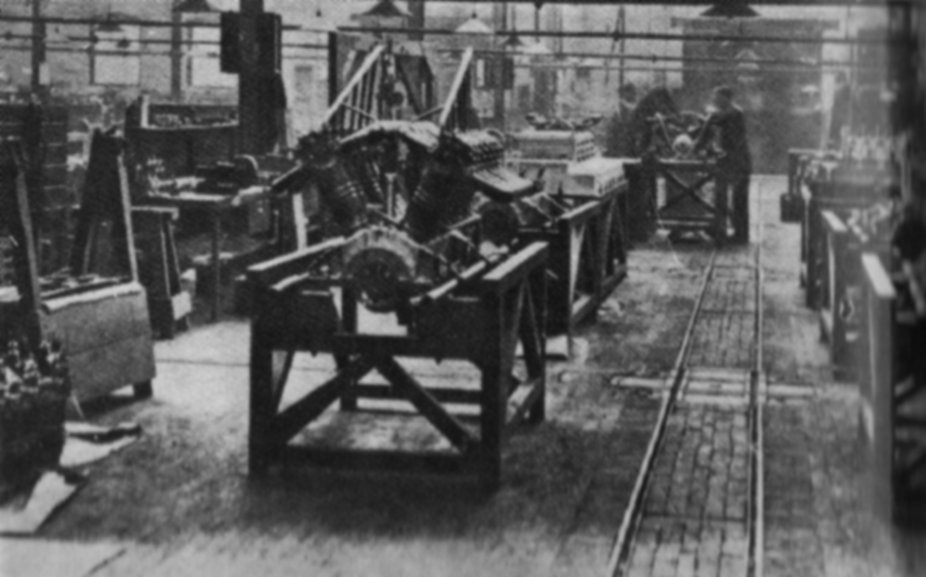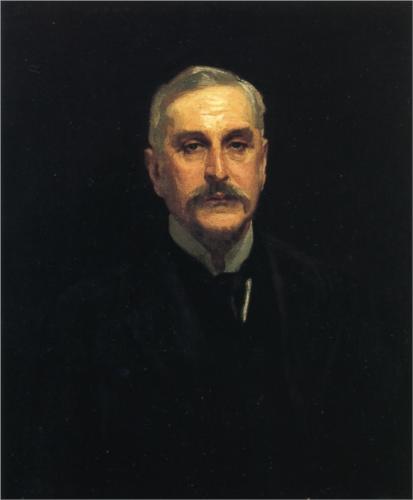|
Medium Mark D
Medium Mark D was a British tank developed at the end of the First World War. It was envisaged as a vehicle to be used in "Plan 1919" an offensive on the Western Front which would use large numbers of heavy and medium tanks to break through the German defences, destroy lines of communication crippling the German army and thus end the war. The Armistice ended the war in 1918 and it would never be tested in combat but development continued for the post-war needs of the British Army. The unusual suspension proved problematic and the earlier tanks were replaced by a Vickers design - the Medium Mark I - in the 1920s It should not be confused with export Vickers Medium Mark D tank, built in one unit for Ireland in 1929. Development J F C Fuller's plan 1919 (circulated in mid-1918) was for the heavy tanks to engage and pin the German troops allowing faster tanks to penetrate the flanks and encircle the enemy isolating them from the chain of command precipitating a breakdown of morale ... [...More Info...] [...Related Items...] OR: [Wikipedia] [Google] [Baidu] |
Rolls-Royce Eagle
The Rolls-Royce Eagle was the first aircraft engine to be developed by Rolls-Royce Limited. Introduced in 1915 to meet British military requirements during World War I, it was used to power the Handley Page Type O bombers and a number of other military aircraft. The Eagle was the first engine to make a non-stop trans-Atlantic crossing by aeroplane when two Eagles powered the converted Vickers Vimy bomber on the transatlantic flight of Alcock and Brown in June 1919. Background At the outbreak of World War I in August 1914, the Royal Aircraft Factory asked Rolls-Royce to develop a new air-cooled engine. Despite initial reluctance they agreed on condition that it be cooled by water rather than air, as this was the company's area of expertise. Design and development Development of the new 20 litre engine was led by Henry Royce from his home in Kent. Based initially on the 7.4 litre 40/50 Rolls-Royce Silver Ghost engine, and drawing also on the design of a 7.2 litre Daimler ... [...More Info...] [...Related Items...] OR: [Wikipedia] [Google] [Baidu] |
Medium Mark A Whippet
The Medium Mark A Whippet was a British tank of the First World War. It was intended to complement the slower British heavy tanks by using its relative mobility and speed in exploiting any break in the enemy lines. Development and production history On 3 October 1916 William Tritton, about to be knighted for developing the Mark I, proposed to the Tank Supply Committee that a faster and cheaper tank, equipped with two engines like the Flying Elephant, should be built to exploit gaps that the heavier but slow tanks made, an idea that up till then had been largely neglected. This was accepted on 10 November and approved by the War Office on 25 November. At that time the name for the project was the ''Tritton Chaser''. Traditionally, the name ''Whippet'' (after the fast-running dog breed) is attributed to Sir William himself. Actual construction started on 21 December. The first prototype, with a revolving turret taken from an Austin armoured car — the first for a British tank ... [...More Info...] [...Related Items...] OR: [Wikipedia] [Google] [Baidu] |
Medium Tank M1922
The Medium Tank M1922 was an inter-war period medium tank built in the United States. It was largely a variant of the Medium Tank M1921, with some changes to use the same track suspension system that had been developed for the Medium Mark D. The M1922 was initially the second tank in an order for two M1921s placed in April 1920 but the order was changed to one M1921 to the original design and one using the cable track system Specifications Like the M1921, the M1922 was essentially a box-shaped tank with a mildly sloped front. It had a round turret, with a 57mm QF Hotchkiss gun carrying 146 rounds. The tank's suspension was of the flexible type, with each track shoe wide. The top speed was . the engine is a Murray and Tregurtha, Marine, 6-cylinder providing 195 hp at 1,250 rpm. it weight 25.5 Short tons. The armour was the same as the M1921. ranging from to . The cable suspension system, similar to that of the earlier British Medium Mark D, was superior to other tanks of the ... [...More Info...] [...Related Items...] OR: [Wikipedia] [Google] [Baidu] |
Royal Ordnance Factory
Royal Ordnance Factories (ROFs) was the collective name of the UK government's munitions factories during and after the Second World War. Until privatisation, in 1987, they were the responsibility of the Ministry of Supply, and later the Ministry of Defence. Origin Prior to the 1930s, Britain's ordnance manufacturing capability had been concentrated within the Royal Arsenal, Woolwich. In the late nineteenth century, the term 'Royal Ordnance Factories' began to be used collectively of the manufacturing departments of the Arsenal (principally the Royal Laboratory, Royal Gun Factory and Royal Carriage Works) which, though they shared the same site, operated independently of one another. This use of the term is seen in the name of the Royal Ordnance Factories Football Club (founded 1893) and it continued through the First World War. The emerging threat of aerial bombing, however, prompted the government to consider dispersing its ordnance factories around the country. Development ... [...More Info...] [...Related Items...] OR: [Wikipedia] [Google] [Baidu] |
Siddeley Puma
The Siddeley Puma was a British aero engine developed towards the end of World War I and produced by Siddeley-Deasy. The first engines left the production lines of Siddeley-Deasy in Coventry in August 1917, production continued until December 1918. At least 4,288 of the 11,500 ordered engines were delivered, orders were cancelled following the Armistice with Germany (Compiègne), Armistice. Production was continued under the name Armstrong Siddeley Puma when the manufacturer was bought by Armstrong Whitworth and became Armstrong Siddeley. The engine was based on a previous Beardmore Halford Pullinger, B.H.P engine which was also developed as the Galloway "Adriatic." Applications *The Puma engine was used in the British World War I bomber aircraft, the Airco D.H.9. In use it proved to be highly troublesome, making the aircraft significantly inferior to the type it replaced. The engine was also installed untidily, with the cylinder heads protruding. The D.H.9, as a type, was impr ... [...More Info...] [...Related Items...] OR: [Wikipedia] [Google] [Baidu] |
Vickers Limited
Vickers Limited was a British engineering conglomerate. The business began in Sheffield in 1828 as a steel foundry and became known for its church bells, going on to make shafts and propellers for ships, armour plate and then artillery. Entire large ships, cars, tanks and torpedoes followed. Airships and aircraft were added, and Vickers jet airliners were to remain in production until 1965. Financial problems following the death of the Vickers brothers were resolved in 1927 by separating Metropolitan Carriage Wagon and Finance Company and Metropolitan-Vickers, then merging the remaining bulk of the original business with Armstrong Whitworth to form Vickers-Armstrongs. The Vickers name resurfaced as Vickers plc between 1977 and 1999. History Foundry Vickers was formed in Sheffield as a steel foundry by the miller Edward Vickers and his father-in-law George Naylor in 1828. Naylor was a partner in the foundry Naylor & Sanderson, and Vickers' brother William owned a steel roll ... [...More Info...] [...Related Items...] OR: [Wikipedia] [Google] [Baidu] |
Tank Corps
An armoured corps (also mechanized corps or tank corps) is a specialized military organization whose role is to conduct armoured warfare. The units belonging to an armoured corps include military staff, and are equipped with tanks and other armoured fighting vehicles, as well as supporting vehicles. The term may refer to two different types of organizations: # A state's top-level branch of the ground forces which serves as the umbrella for all of its specialized armoured formations # Any of the corps-sized formations within a ground forces that are composed chiefly of military units serving in the armoured role List of armoured corps branches of ground forces The armoured, tank, or mechanized corps of various nations' armed forces during different time periods include: * Royal Australian Armoured Corps * Royal Canadian Armoured Corps * Bangladesh Armoured Corps * British Indian Armoured Corps (to 1947) * Indian Army Armoured Corps (from 1947) * Israeli Armored Corps * Egy ... [...More Info...] [...Related Items...] OR: [Wikipedia] [Google] [Baidu] |
Traction Engine
A traction engine is a steam engine, steam-powered tractor used to move heavy loads on roads, plough ground or to provide power at a chosen location. The name derives from the Latin ''tractus'', meaning 'drawn', since the prime function of any traction engine is to draw a load behind it. They are sometimes called road locomotives to distinguish them from railway steam locomotive, locomotives – that is, steam engines that run on rails. Traction engines tend to be large, robust and powerful, but also heavy, slow, and difficult to manoeuvre. Nevertheless, they revolutionized agriculture and road haulage at a time when the only alternative Prime mover (tractor unit), prime mover was the draught horse. They became popular in industrialised countries from around 1850, when the first self-propelled portable steam engines for agricultural use were developed. Production continued well into the early part of the 20th century, when competition from internal combustion engine-powered ... [...More Info...] [...Related Items...] OR: [Wikipedia] [Google] [Baidu] |
John Fowler & Co
John Fowler & Co Engineers of Leathley Road, Hunslet, Leeds, West Yorkshire, England produced traction engines and ploughing implements and equipment, as well as railway equipment. Fowler also produced the Track Marshall tractor which was a tracked version of the Field Marshall. British Railways Engineering Department locomotives ED1 to ED7 were built by Fowler History John Fowler was an agricultural engineer and inventor who was born in Wiltshire in 1826. He worked on the mechanisation of agriculture and was based in Leeds. He is credited with the invention of steam-driven ploughing engines. He died 4 December 1864, following a hunting accident. After his death, John Fowler & Co., was then continued by Robert Fowler and Robert Eddison. In 1886 the limited company of John Fowler & Co., (Leeds) Ltd., was formed. It merged with Marshall, Sons & Co., Ltd., of Gainsborough in 1947 to form Marshall-Fowler Ltd. Although not well known for them, Fowler also built a sma ... [...More Info...] [...Related Items...] OR: [Wikipedia] [Google] [Baidu] |
Mark IV Tank
The Mark IV (pronounced ''Mark four'') was a British tank of the First World War. Introduced in 1917, it benefited from significant developments of the Mark I tank (the intervening designs being small batches used for training). The main improvements were in armour, the re-siting of the fuel tank and ease of transport. A total of 1,220 Mk IV were built: 420 "Males", 595 "Females" and 205 Tank Tenders (unarmed vehicles used to carry supplies), which made it the most numerous British tank of the war. The Mark IV was first used in mid 1917 at the Battle of Messines Ridge. It remained in British service until the end of the war, and a small number served briefly with other combatants afterwards. Development The director of the Tank Supply Department, Albert Gerald Stern, first intended to fit the Mark IV with a new engine and transmission. Production of battle tanks was halted until the new design was ready, necessitating the use of the Mark II and III as interim training tanks. ... [...More Info...] [...Related Items...] OR: [Wikipedia] [Google] [Baidu] |





